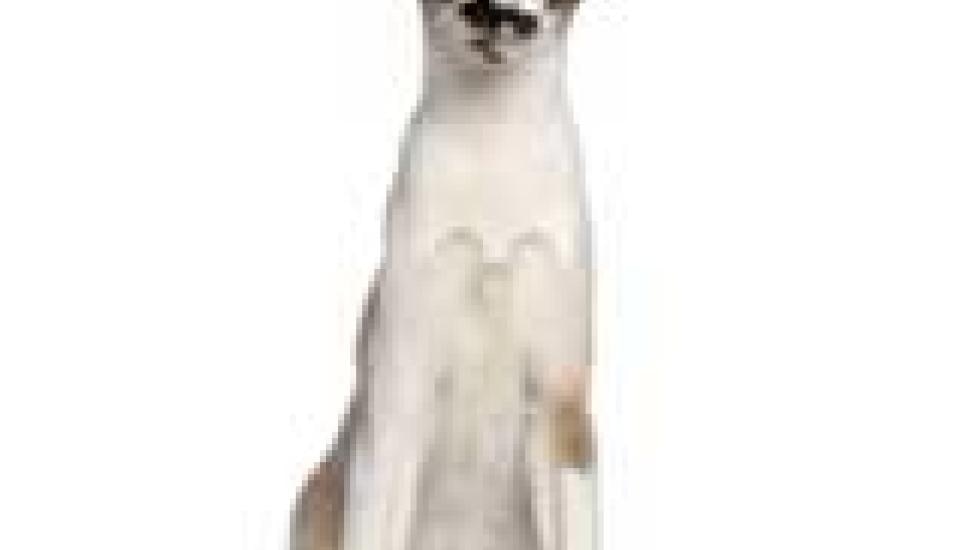Treating the Skinny Cat with Heart Disease
Feeding and nutritionally monitoring a cat that has been diagnosed with heart disease in oftentimes difficult. Heart disease itself and the medications used in its treatment can all adversely affect a cat’s appetite and nutritional status.
A condition known as cardiac cachexia is the biggest problem. Cachexia is defined as a loss of lean body mass (e.g., muscle) and occurs through a combination of factors that include poor appetite, increased energy requirements, and inflammation. Cardiac cachexia is not easily recognized early in its course, particularly in overweight animals, because small losses in muscle mass can be hard to appreciate. The scale may also lie because a stable or increasing weight can be due, at least in part, to fluid retention caused by poor heart function. To monitor for cardiac cachexia, a veterinarian must evaluate muscle mass specifically, not simply keep track of the more general parameters of body weight and/or body condition score.
Cardiac cachexia appears to be associated with a poorer prognosis. Research has revealed a "u-shaped" curve when it comes to comparing death rates and body weight in cats diagnosed with heart disease. In other words, the extremely skinny and the extremely fat have the worst survival rates. Some specialists suggest that the longer survival times seen in moderately overweight cats are not caused by more fat but by less cachexia. It seems likely that preventing and treating cardiac cachexia in cats with heart disease could improve outcomes.
To deal with cardiac cachexia, we must approach the problem from multiple angles. First of all, make sure the cat is receiving appropriate medical management for heart disease and that the medications being used are not responsible for a lack of appetite. Next, try switching to a more palatable food. Cardiac diets can be helpful in the management of heart disease, but frankly it is more important that a cat eat enough of a good food versus too little of the "ideal" food. Some individuals prefer canned, others dry, and some may thrive on a home-prepared diet. High sodium foods and treats should be avoided. Make all dietary changes slowly to increase the chances that a cat will accept the new diet.
Fish oil supplements can also be beneficial for cats with heart disease. The omega-3 fatty acids they contain help modulate inflammation and may also reduce cardiac arrhythmias, cardiac remodeling, blood pressure, and the formation of abnormal blood clots.
When improved medical management, dietary changes, and fish oil supplements do not sufficiently improve a cat’s cardiac cachexia, it is time to consider a feeding tube. Feeding tubes can usually be quickly and safely put in place, even in the face of cardiac disease. A feeding tube allows cats to receive the appropriate amount of a suitable diet (and take all of their medications) with little stress to everyone involved.
Cats with heart disease need to be closely monitored and their treatment protocols adjusted on an as needed basis. Frequent rechecks and good communication between a cat’s owner and veterinarian are the keys to successfully managing a cat that has been diagnosed with heart disease and cardiac cachexia.

Dr. Jennifer Coates
Image: Eric Isselee / via Shutterstock
